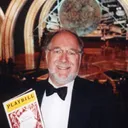Stay in the Loop
BSR publishes on a weekly schedule, with an email newsletter every Wednesday and Thursday morning. There’s no paywall, and subscribing is always free.
Shakespeare's royals, up close and personal
Lantern Theater's "Henry IV, Part I' (2nd review)

Verdi's opera Falstaff, based on Shakespeare's Henry IV Part I and The Merry Wives of Windsor, is a much more popular work than either play. But we should grab every rare chance we get to see the originals.
Henry IV Part I, in particular, is a rich piece that combines comedy, drama and history, and I recommend the current production by the Lantern Theater.
Some attendees may have trouble grasping who's who among the many characters who appear in the opening scene. But director Charles McMahon keeps the rival royals distinct with differing accents and attire. You can clearly see who are the Scots, who are the Welsh and who are the English, although it still takes close attention to assimilate the back-story.
Once past that, we meet the wonderful character of Falstaff, played impressively by Peter Pryor. The overweight, aging knight is larcenous and bawdy but so mirthful that it's easy to see why young Prince Hal treats him as a surrogate father. Pryor avoids the temptation to bellow and over-act. He plays Falstaff straight, so we clearly see the sadness in the man's declining state.
Richer than Verdi
In combining three great characters at odds with one another"“ King Henry IV, his rebellious son Hal, and Falstaff"“ the play presents human situations that far transcend the mere re-telling of British history. We see the anguish of Henry IV as he wonders what his legacy will be, and his disappointment in his son. It's a far richer tapestry than what we see in either The Merry Wives of Windsor or Verdi's opera.
Pryor is double cast as the king as well as Falstaff. His changes of costume and demeanor are handled amazingly well, although Pryor fails to capture all the power that's implied in Henry IV.
Allen Radway is excellent as Prince Hal, and Andrew Kane is properly fiery as Hotspur. All the other parts are well acted too.
Rubbing shoulders
The immediacy of the set is impressive. Shakespeare knew what he was doing in this area, as in others, when he used a thrust stage that brought his actors close to the audience. The Lantern's space on the second floor of St. Stephen's Church is small, of course, and in this production the seats occupy three sides of the room. Miraculously, the playing space doesn't seem cramped. McMahon has his actors emerge from all corners of the room and virtually rub shoulders with the audience.
Simple but sturdy tables and heavy doors on the fourth wall create a sense of majesty that you wouldn't expect in this loft. Indeed, this is the most royal looking of all the Shakespeare works that I've seen recently in the Philadelphia area.
The Philadelphia Shakespeare Festival likewise seats its audiences on three sides of a small stage. In contrast, the touring Romeo and Juliet last week at the Annenberg Center used a proscenium stage that kept patrons at a great distance, beyond an empty orchestra pit.♦
To read another review by Robert Zaller, click here.
Henry IV Part I, in particular, is a rich piece that combines comedy, drama and history, and I recommend the current production by the Lantern Theater.
Some attendees may have trouble grasping who's who among the many characters who appear in the opening scene. But director Charles McMahon keeps the rival royals distinct with differing accents and attire. You can clearly see who are the Scots, who are the Welsh and who are the English, although it still takes close attention to assimilate the back-story.
Once past that, we meet the wonderful character of Falstaff, played impressively by Peter Pryor. The overweight, aging knight is larcenous and bawdy but so mirthful that it's easy to see why young Prince Hal treats him as a surrogate father. Pryor avoids the temptation to bellow and over-act. He plays Falstaff straight, so we clearly see the sadness in the man's declining state.
Richer than Verdi
In combining three great characters at odds with one another"“ King Henry IV, his rebellious son Hal, and Falstaff"“ the play presents human situations that far transcend the mere re-telling of British history. We see the anguish of Henry IV as he wonders what his legacy will be, and his disappointment in his son. It's a far richer tapestry than what we see in either The Merry Wives of Windsor or Verdi's opera.
Pryor is double cast as the king as well as Falstaff. His changes of costume and demeanor are handled amazingly well, although Pryor fails to capture all the power that's implied in Henry IV.
Allen Radway is excellent as Prince Hal, and Andrew Kane is properly fiery as Hotspur. All the other parts are well acted too.
Rubbing shoulders
The immediacy of the set is impressive. Shakespeare knew what he was doing in this area, as in others, when he used a thrust stage that brought his actors close to the audience. The Lantern's space on the second floor of St. Stephen's Church is small, of course, and in this production the seats occupy three sides of the room. Miraculously, the playing space doesn't seem cramped. McMahon has his actors emerge from all corners of the room and virtually rub shoulders with the audience.
Simple but sturdy tables and heavy doors on the fourth wall create a sense of majesty that you wouldn't expect in this loft. Indeed, this is the most royal looking of all the Shakespeare works that I've seen recently in the Philadelphia area.
The Philadelphia Shakespeare Festival likewise seats its audiences on three sides of a small stage. In contrast, the touring Romeo and Juliet last week at the Annenberg Center used a proscenium stage that kept patrons at a great distance, beyond an empty orchestra pit.♦
To read another review by Robert Zaller, click here.
What, When, Where
Henry IV, Part I. By William Shakespeare; Charles McMahon directed. Lantern Theater production through May 9, 2010 at St. Stephen’s Theater, 923 Ludlow St (215) 829-0935 or www.lanterntheater.org.
Sign up for our newsletter
All of the week's new articles, all in one place. Sign up for the free weekly BSR newsletters, and don't miss a conversation.

 Steve Cohen
Steve Cohen